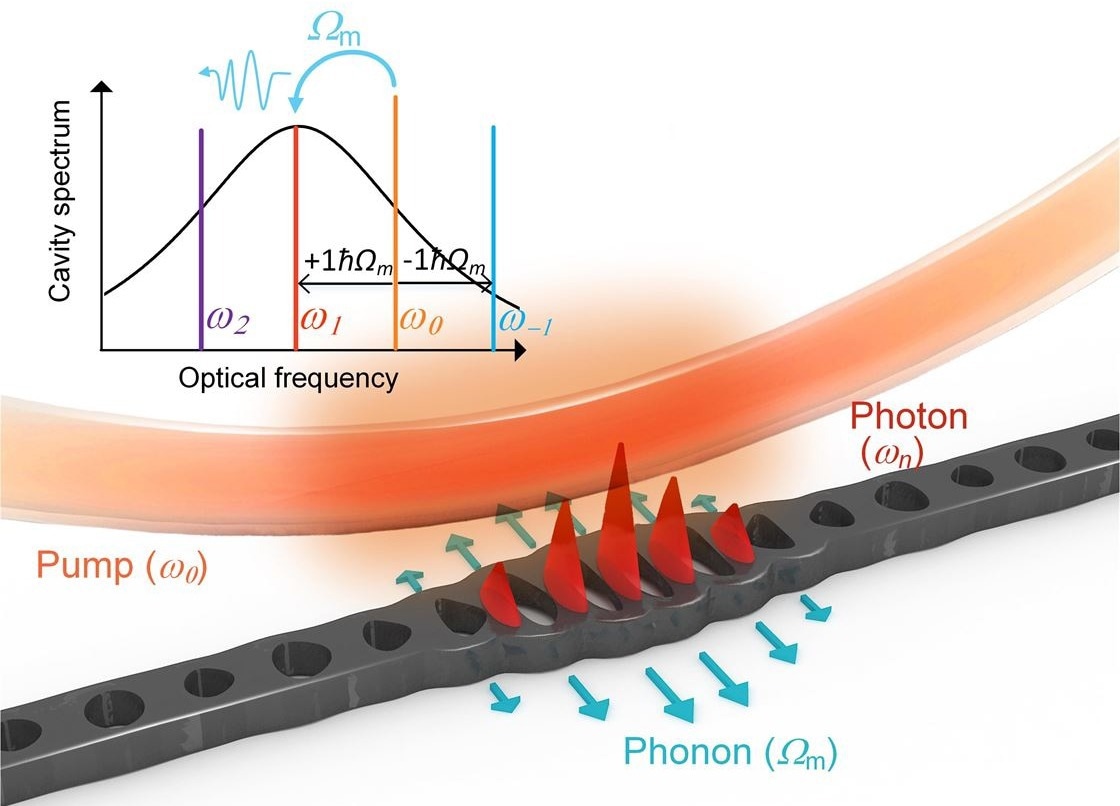Since the development of the first ruby laser—a solid-state laser that uses a synthetic ruby crystal as its laser medium—in 1960, the usage of lasers in scientific, medical, and industrial disciplines has grown substantially.

Strong photon–phonon coupling and simultaneous lasing of photon and phonon in a one-dimensional optomechanical microcavity. Image Credit: Kaiyu Cui, Tsinghua University
Lasers with exceptionally small widths have become the foundation of research as science and technology have advanced. The much-anticipated gravitational wave detection program Laser Interferometer Gravitational-Wave Observatory (LIGO) in the United States, for example, has extraordinarily stringent laser coherence requirements.
Although Brillouin lasers offer significant potential for such applications due to their linewidth narrowing impact, the lasing threshold of on-chip Brillouin lasers is tremendous due to the intrinsic loss of the Brillouin waveguide and the huge mode volume.
To address this issue, a group from Tsinghua University’s Nano-OptoElectronics Lab headed by Professor Yidong Huang suggests an equivalent scattering photon lasing phenomenon occurring in an optomechanical microcavity, which can aid in the realization of a new on-chip narrow linewidth laser with a lower lasing threshold.
The new laser can be achieved from a one-dimensional optomechanical crystal with both photon and phonon excitation within a chip size of just tens of microns by a small pump threshold of only 500 microwatts.
Kaiyu Cui, Associate Professor, Tsinghua University
The scientists discovered that following phonon lasing at 6.2 GHz, the new laser’s linewidth was reduced by four orders of magnitude to 5.4 kHz. This extremely coherent phonon laser has numerous applications, including high-precision mass sensing, spectral sensing, and signal processing. Simultaneously, the excited photon has a strong threshold effect, which can be used in coherent wavelength conversion.
It is worth noting that establishing concurrent photon and phonon lasing in one-dimensional optomechanical crystals is a difficult task. A physical mechanism known as defect modes requires periodically aligned nanostructures to restrict both light and mechanical waves in a very small volume. Only then could the confined photons and phonons within the microcavity experience substantial energy coupling, enabling coherent lasing at extremely low pump power.
Nonetheless, the researchers used electron-beam lithography to effectively build one-dimensional optomechanical crystals on a silicon chip. Substantial lasing was noticed on the spectrometer when the incident pump power surpassed the threshold. Indeed, the experimental data confirmed the theoretical predictions.
The study, which might pave the way for silicon-based photonic and phononic lasers to fill the urgent need for new laser technologies, was published in the journal Fundamental Research.
In optomechanical crystals, nonlinear equations can be used to describe the behavior of photons and phonons. Since nonlinear systems cannot be solved analytically in general, most previous studies have been conducted based on linearized equations. Based on our findings, we propose that the nonlinear equations can be analyzed directly by means of limit-cycle theory, which gives the first analytical formulation of the laser linewidth under the effect of phase noise.
Yidong Huang, Professor, Tsinghua University
Journal Reference
Xiong, J., et al. (2022) Phonon and photon lasing dynamics in optomechanical cavities. Fundamental Research. doi.org/10.1016/j.fmre.2022.10.008.